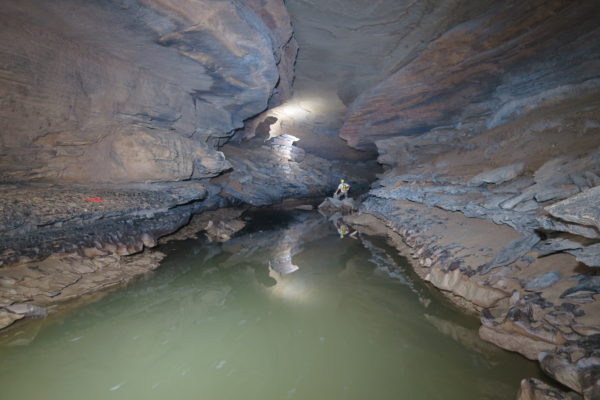Underground waterworks
Washington University geologists are helping to map the extensive cave that underlies a “sinkhole plain” in nearby southern Illinois.
Wiens heads seismology effort in Antarctica
Douglas A. Wiens, Ph.D., professor and chair of earth and planetary sciences in Arts & Sciences, will head the seismology research team of an ambitious international effort to map and analyze an unknown part of Antarctica.
Wiens heads seismology effort in international Antarctic study
Douglas A. Wiens, Ph.D., professor and chair of earth and planetary sciences in Arts & Sciences, will head the seismology research team of an ambitious international effort to map and analyze an unknown part of Antarctica. The project is called AGAP (Antarctica’s Gamburtsev Province) after the Gamburtsev Subglacial Mountains, which are the main feature of the region. Wiens, Patrick Shore, computer specialist in earth and planetary sciences, and graduate students David Heizel and Amanda Lough will install 26 seismographs on the frozen surface of central Antarctica, a part of the world that is a geological mystery.
Caves of St. Louis County: a tale of loss
Robert Osburn (yellow helmet, recording and sketching) and WUSTL graduate student Jenny Lippmann (measuring and doing compass readings) conducting the cave survey in a small passage of 23 degree cave in Crawford County, Missouri.The Caves of St. Louis County and the Bridges of Madison County share a common theme: loss. The former, a scholarly paper that appears as the sole entry of the current issue of Missouri Speleology, is a description of some of St. Louis County’s 127 known caves and a warning that development over the past two centuries has eliminated or destroyed many caves in a state that could quite rightly call itself the Cave State. The latter is a tear-jerking novel, made into a movie by Clint Eastwood about a doomed, unlikely love affair, a hallmark of the ’90s with all the permanence of the Backstreet Boys. Caves, though, are in trouble, in St. Louis County, Missouri, and elsewhere, says co-author Robert Criss, Ph.D., professor of Earth and Planetary Sciences in Arts & Sciences at Washington University in St. Louis.
Geologists map Cartwright Country
The Ponderosa gang. The “Big Bonanza” was part of the Comstock Lode, now newly mapped.Remember the burning Ponderosa map at the beginning of the long-running TV show “Bonanza”? It’s up in flames before you can read all the place names. Now a geologist at Washington University in St. Louis has replaced that map with one of the famous ore site known as the Comstock Lode, a part of which is the “Big Bonanza.” While it’s doubtful that Hoss, Adam and Little Joe – not to mention the sages, Pa and Hop Sing – could make heads nor tails of it, the map is a valuable contribution to geology because it gives an interpretation of the flow of hot waters interacting with rock some 14 million years ago that created the ore district.

